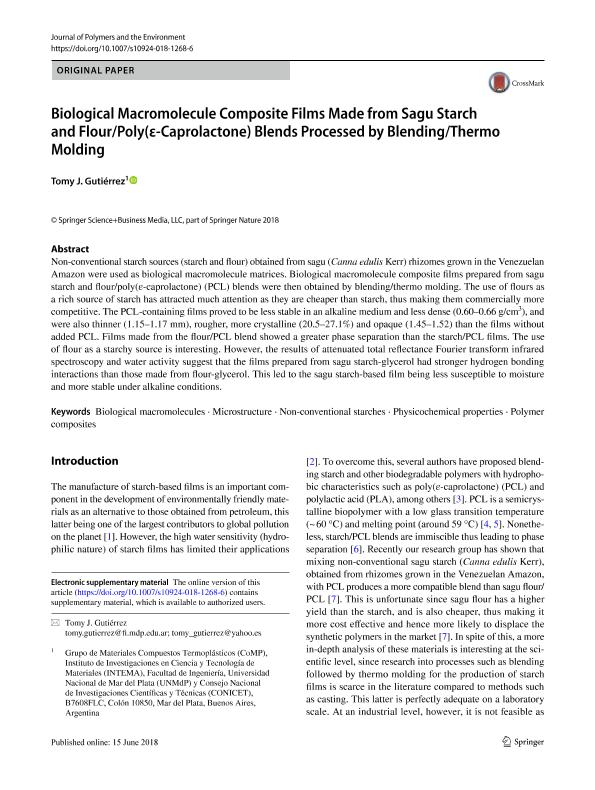Artículo
Biological Macromolecule Composite Films Made from Sagu Starch and Flour/Poly(ε-Caprolactone) Blends Processed by Blending/Thermo Molding
Fecha de publicación:
09/2018
Editorial:
Springer/Plenum Publishers
Revista:
Journal of Polymers and the Environment
ISSN:
1566-2543
e-ISSN:
1572-8919
Idioma:
Inglés
Tipo de recurso:
Artículo publicado
Clasificación temática:
Resumen
Non-conventional starch sources (starch and flour) obtained from sagu (Canna edulis Kerr) rhizomes grown in the Venezuelan Amazon were used as biological macromolecule matrices. Biological macromolecule composite films prepared from sagu starch and flour/poly(ε-caprolactone) (PCL) blends were then obtained by blending/thermo molding. The use of flours as a rich source of starch has attracted much attention as they are cheaper than starch, thus making them commercially more competitive. The PCL-containing films proved to be less stable in an alkaline medium and less dense (0.60–0.66 g/cm3), and were also thinner (1.15–1.17 mm), rougher, more crystalline (20.5–27.1%) and opaque (1.45–1.52) than the films without added PCL. Films made from the flour/PCL blend showed a greater phase separation than the starch/PCL films. The use of flour as a starchy source is interesting. However, the results of attenuated total reflectance Fourier transform infrared spectroscopy and water activity suggest that the films prepared from sagu starch-glycerol had stronger hydrogen bonding interactions than those made from flour-glycerol. This led to the sagu starch-based film being less susceptible to moisture and more stable under alkaline conditions.
Archivos asociados
Licencia
Identificadores
Colecciones
Articulos(INTEMA)
Articulos de INST.DE INV.EN CIENCIA Y TECNOL.MATERIALES (I)
Articulos de INST.DE INV.EN CIENCIA Y TECNOL.MATERIALES (I)
Citación
Gutiérrez Carmona, Tomy José; Biological Macromolecule Composite Films Made from Sagu Starch and Flour/Poly(ε-Caprolactone) Blends Processed by Blending/Thermo Molding; Springer/Plenum Publishers; Journal of Polymers and the Environment; 26; 9; 9-2018; 3902-3912
Compartir
Altmétricas




